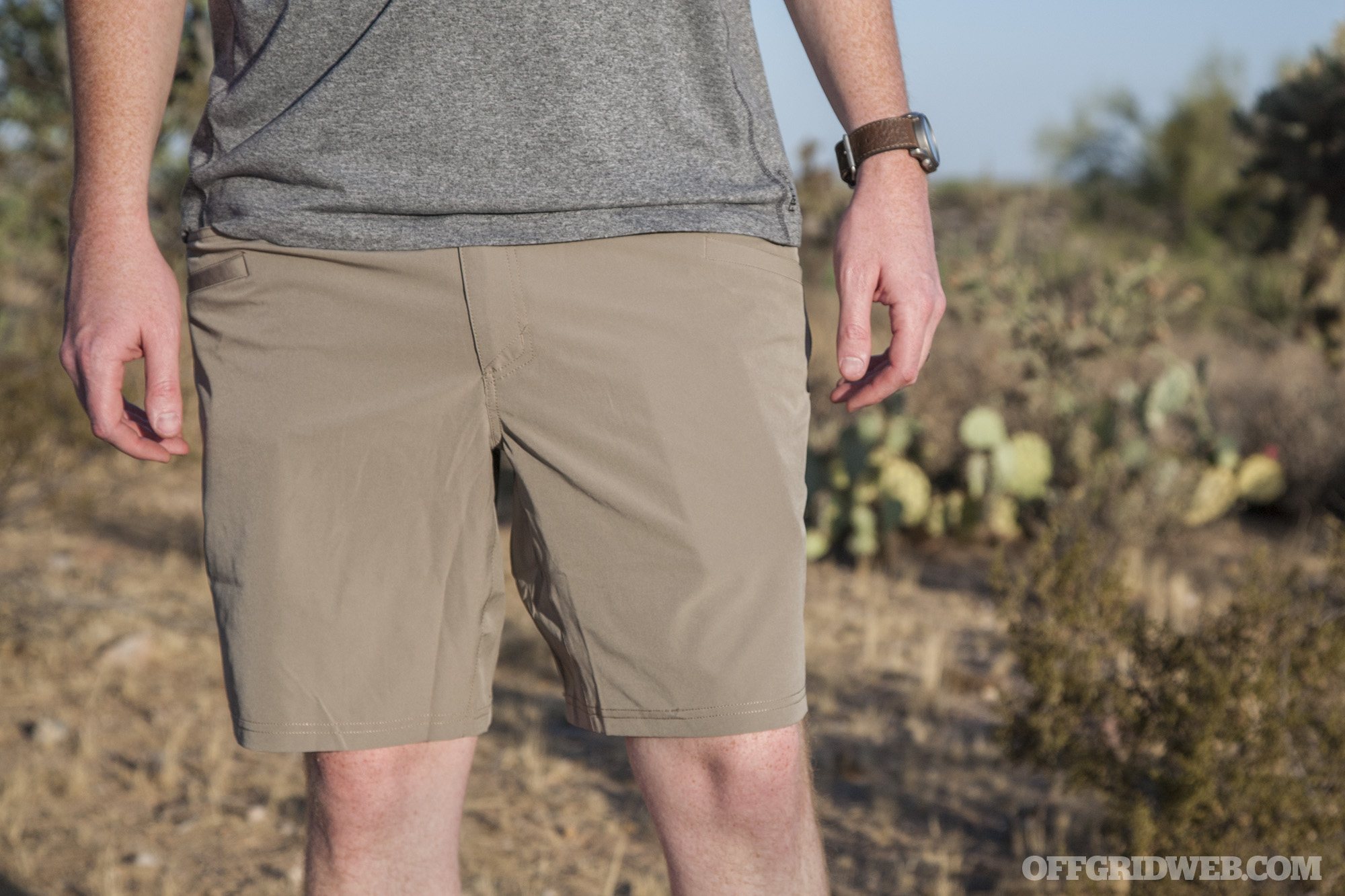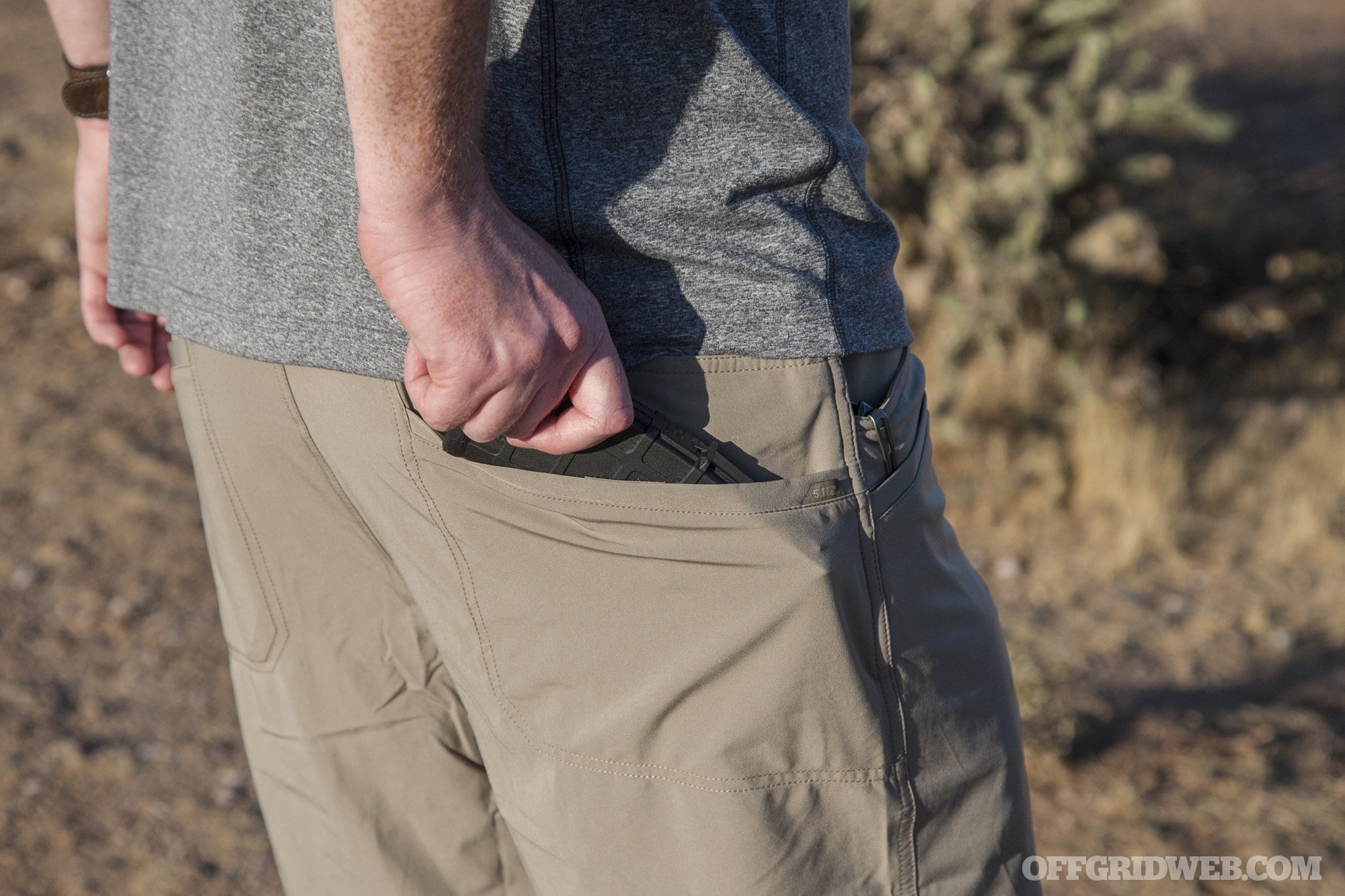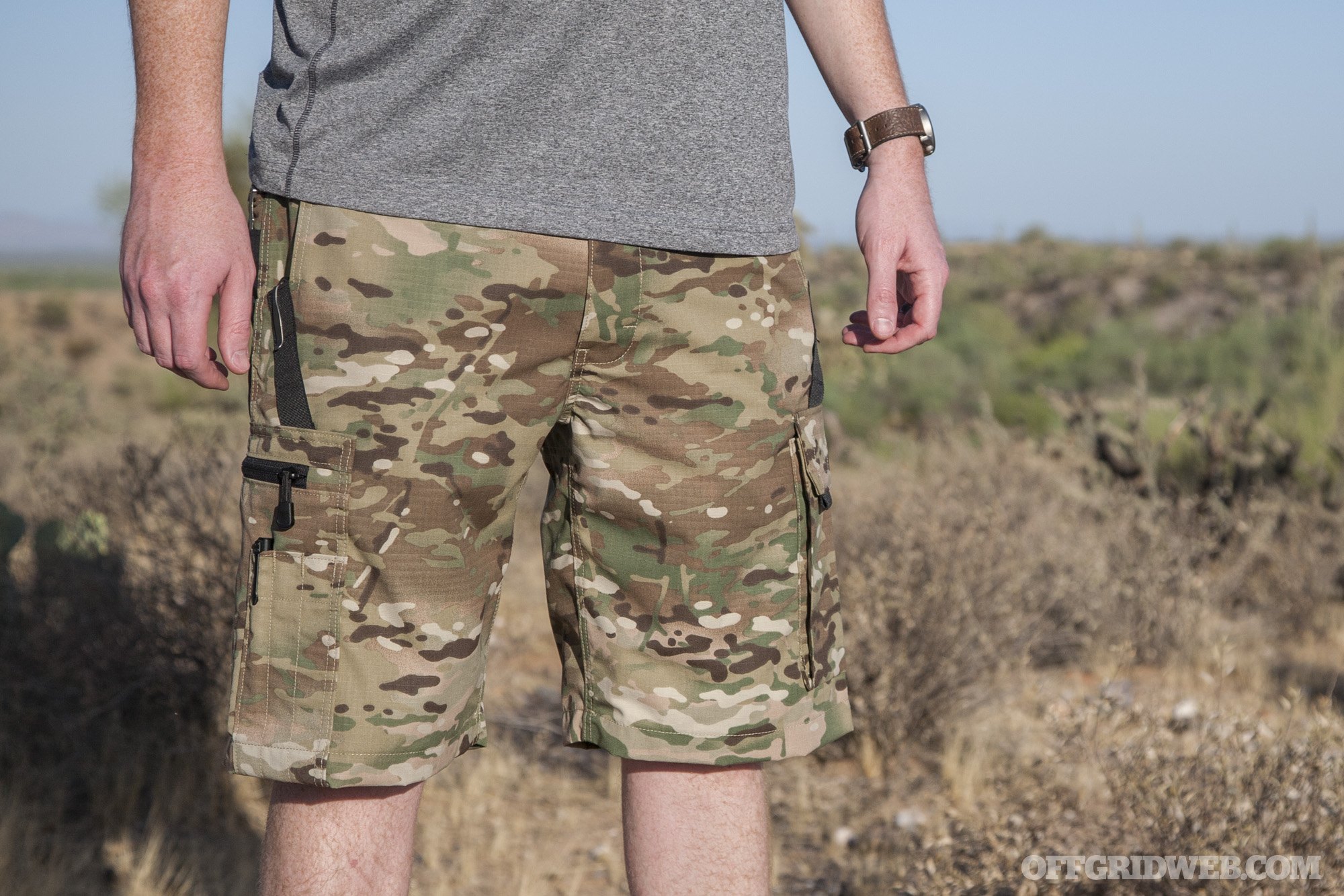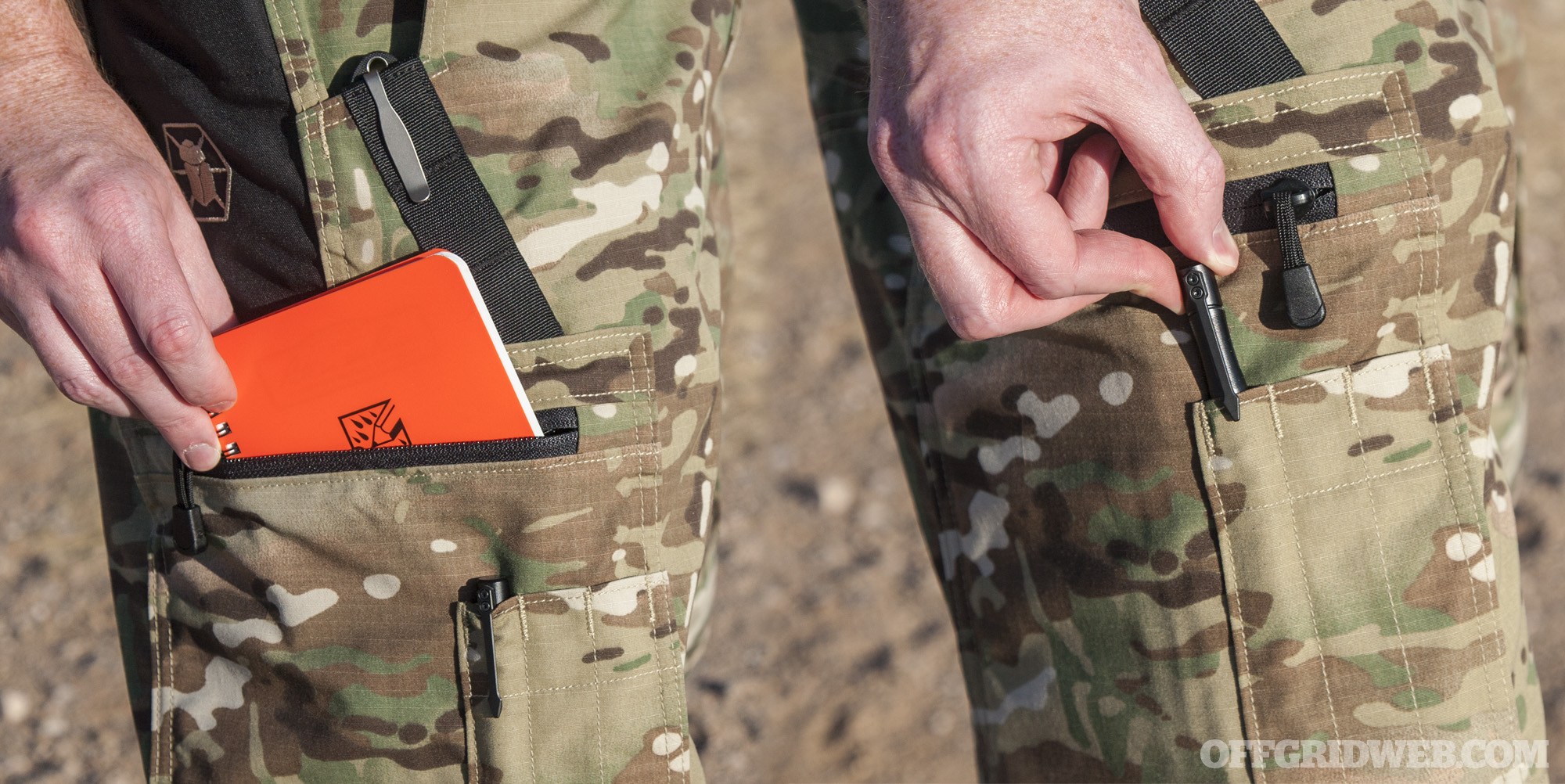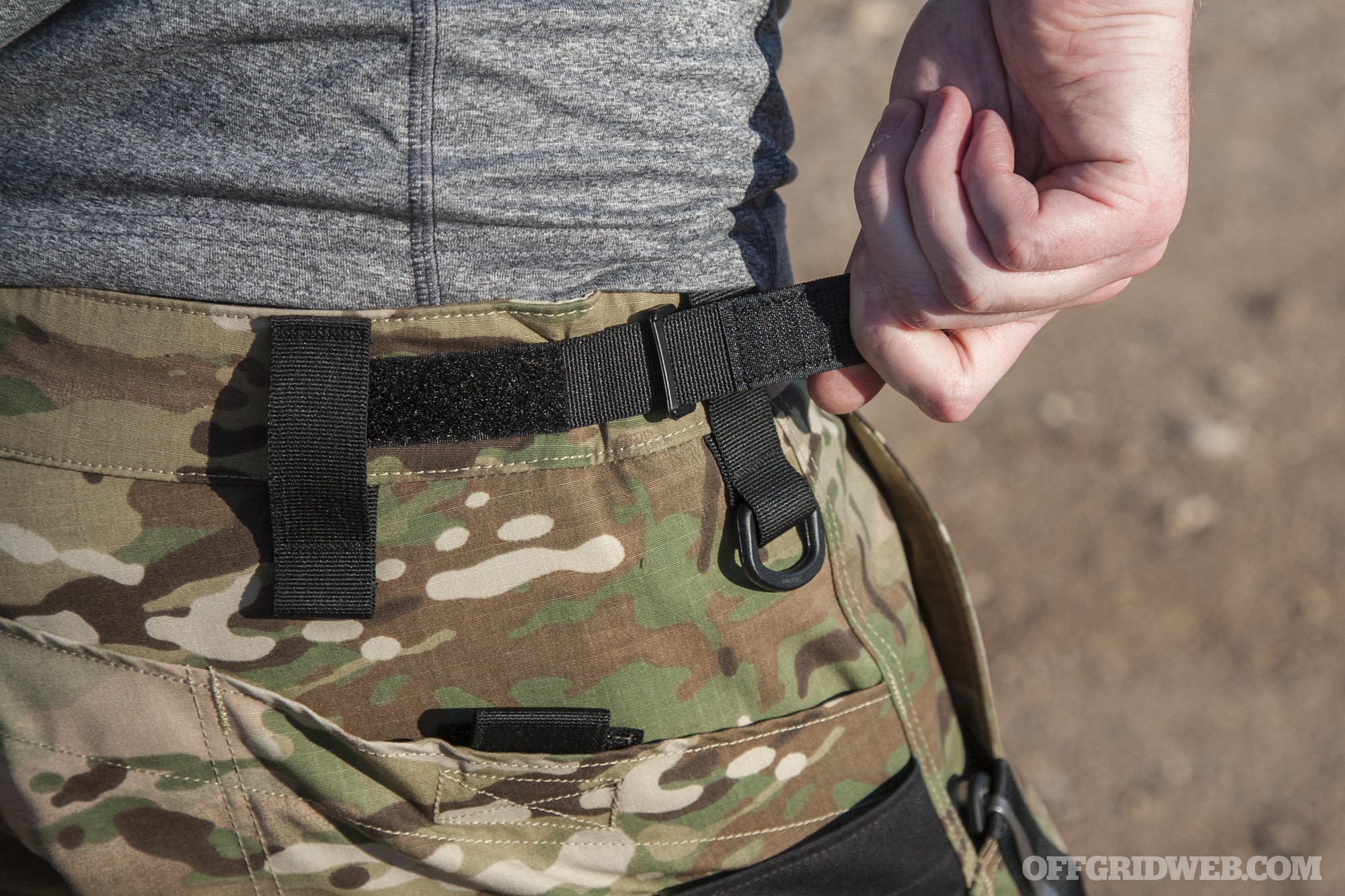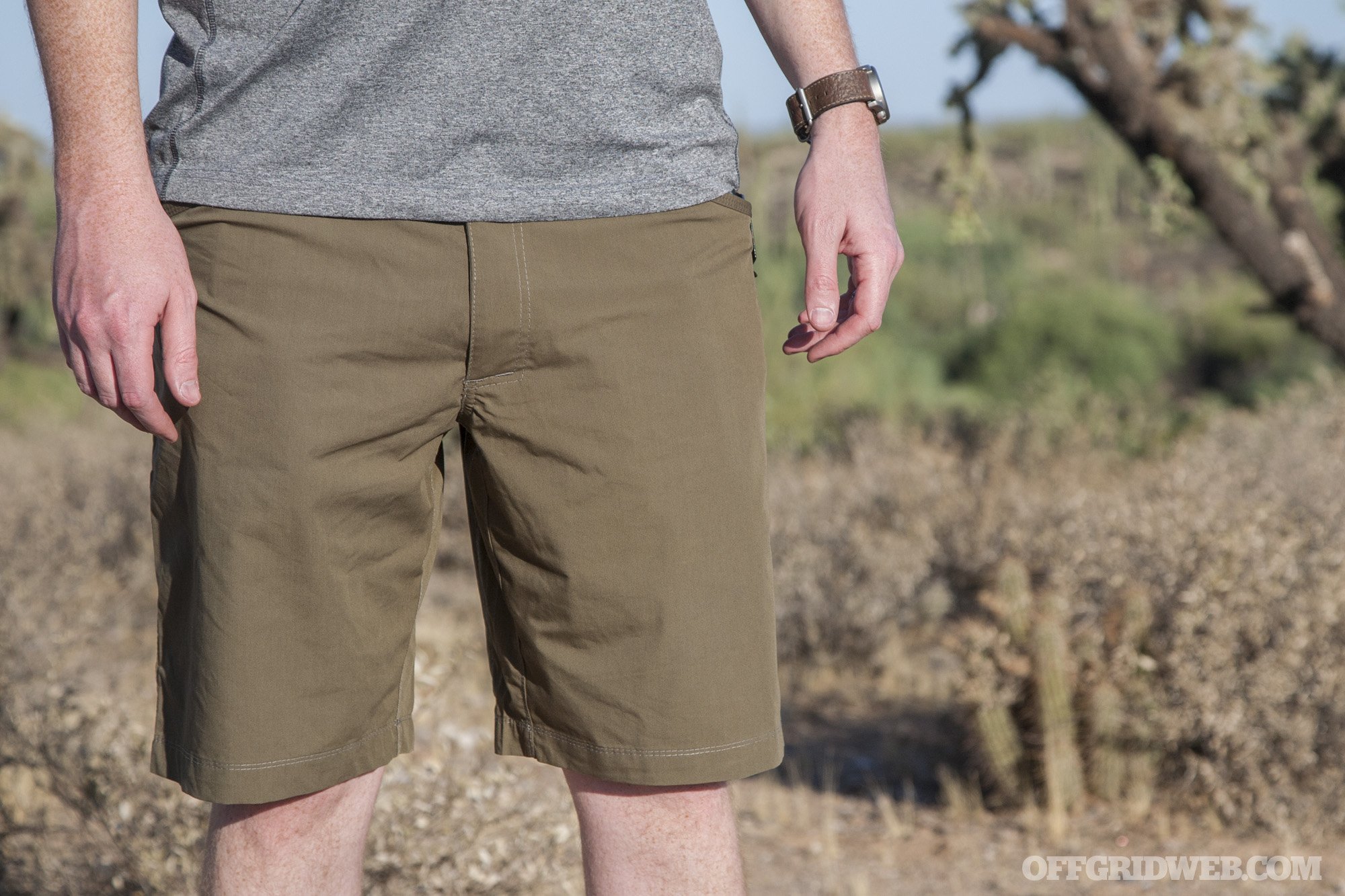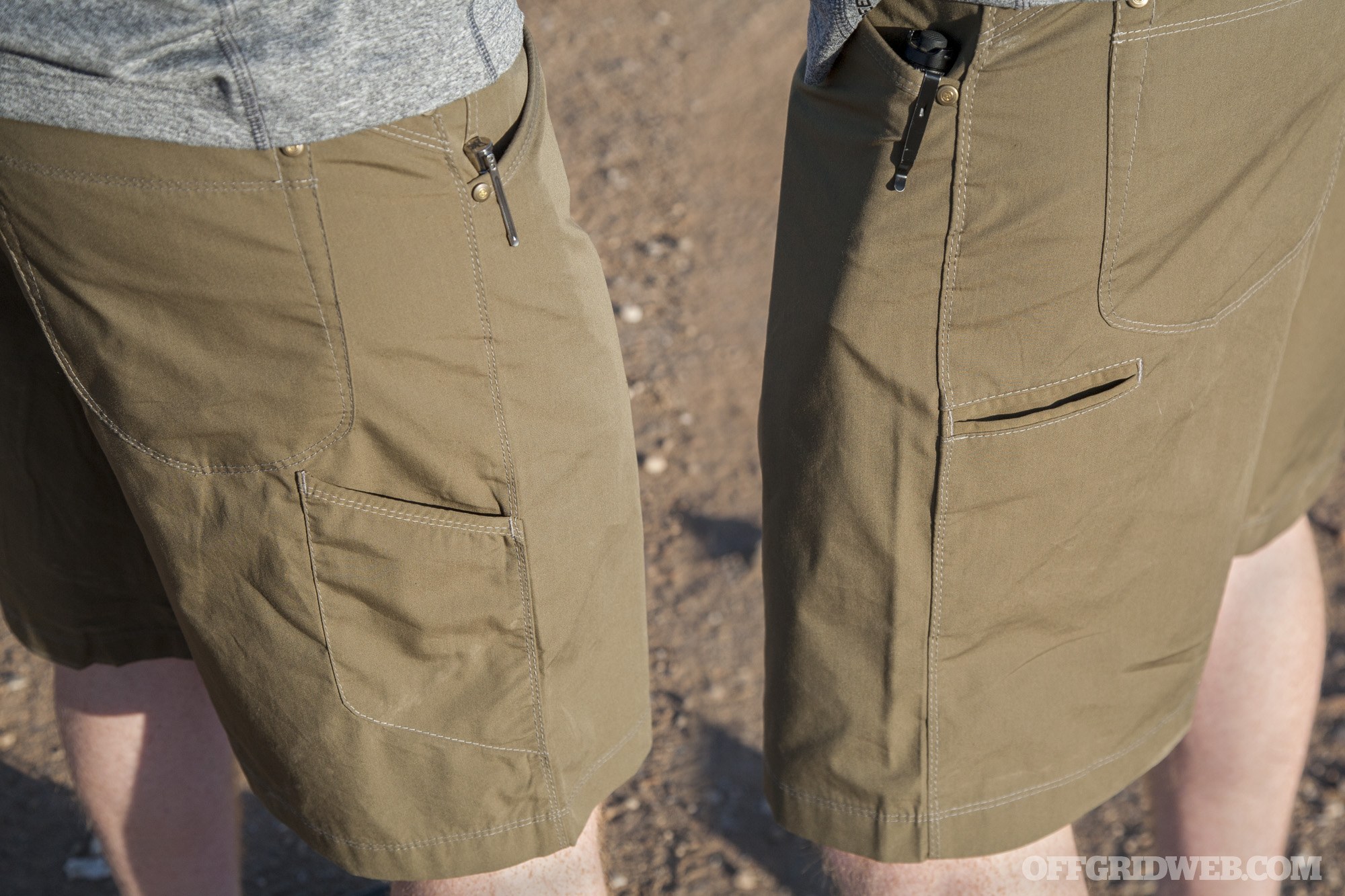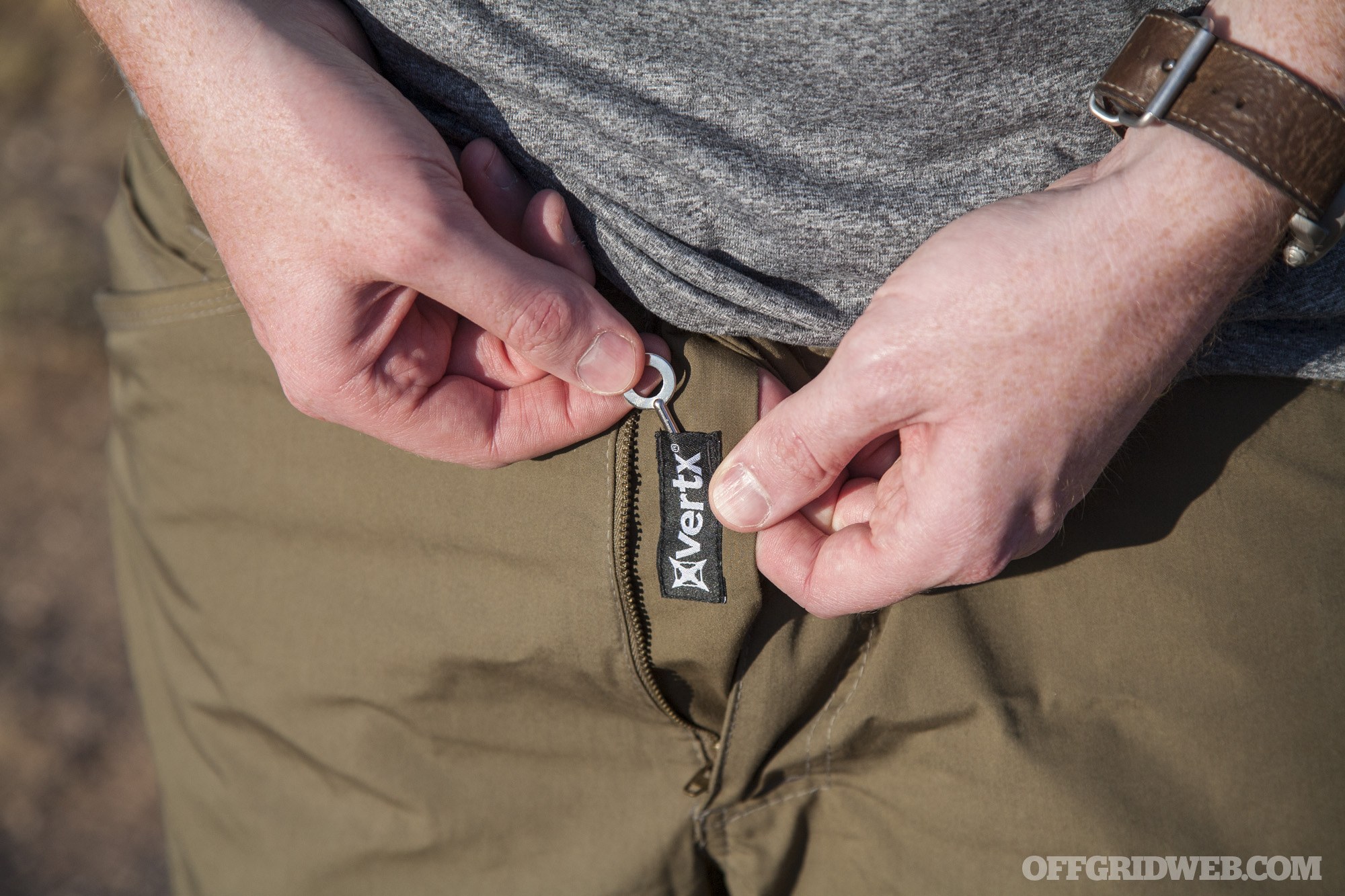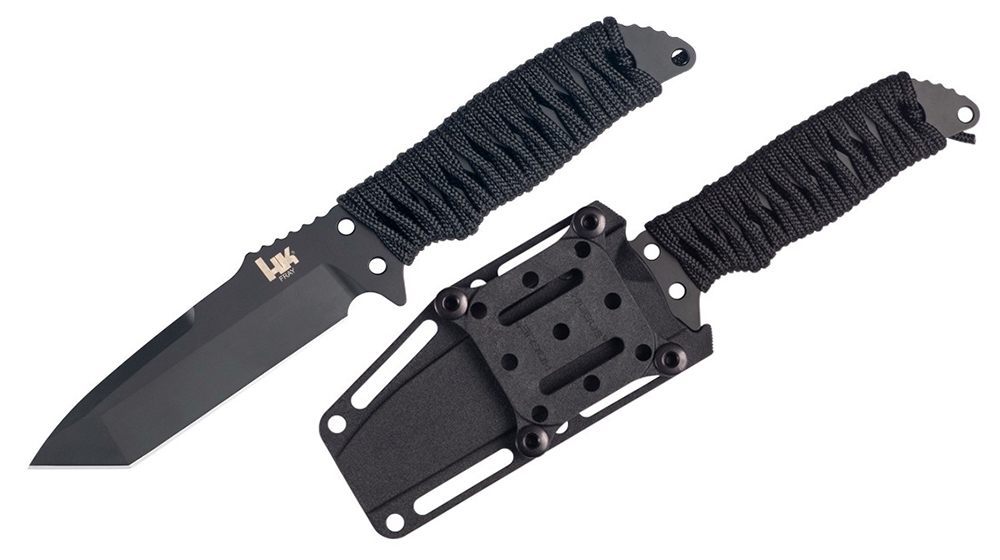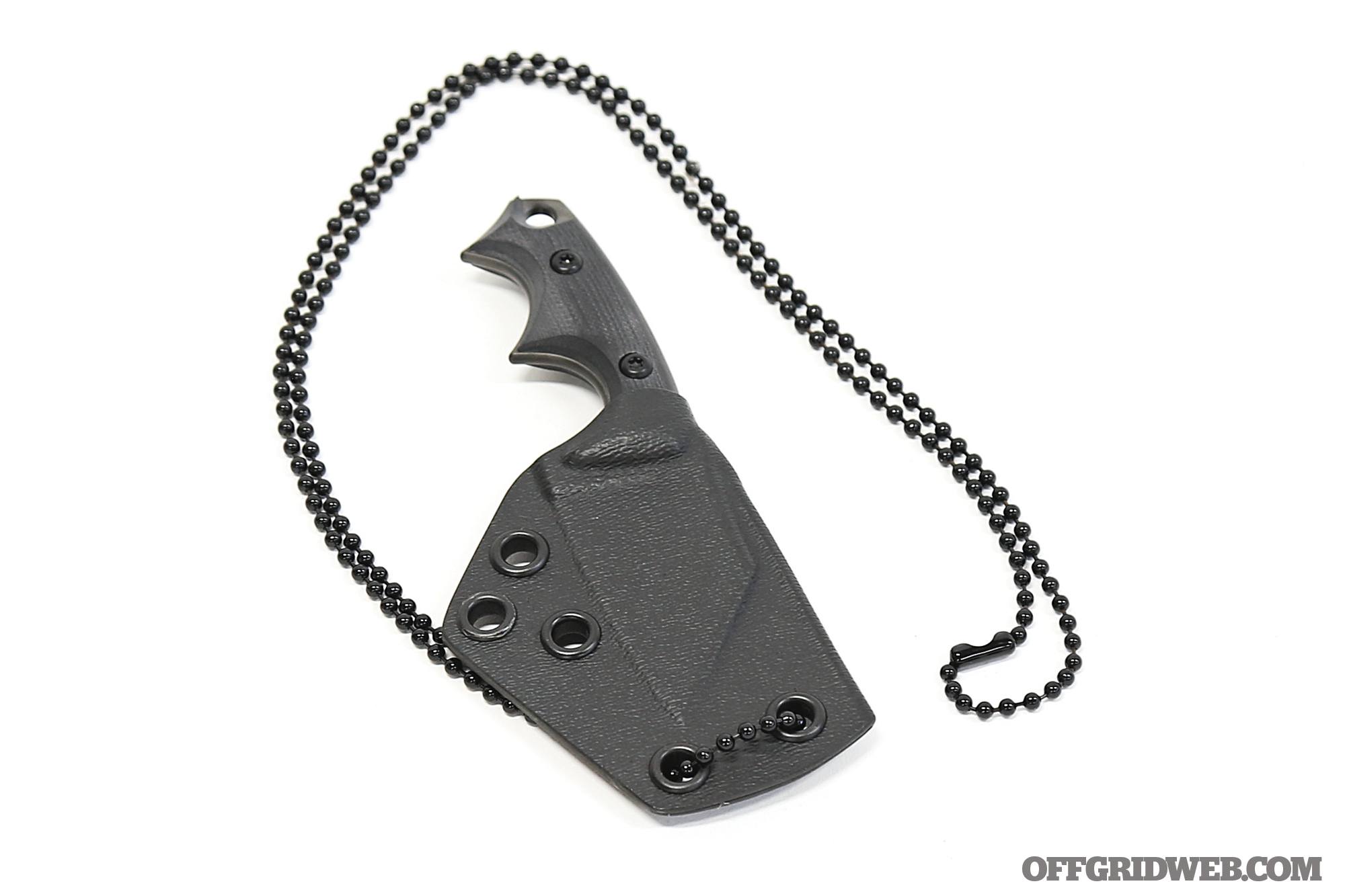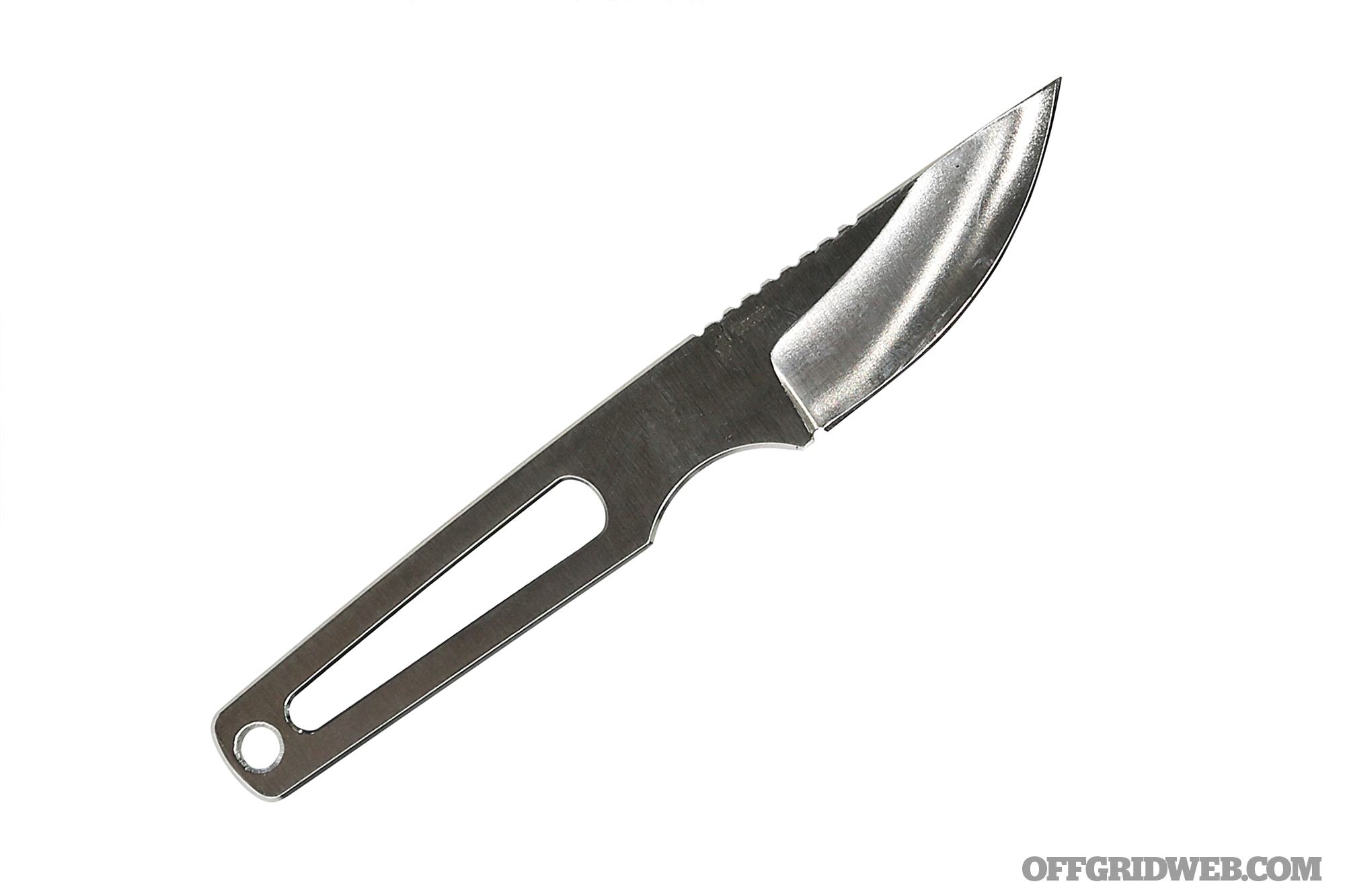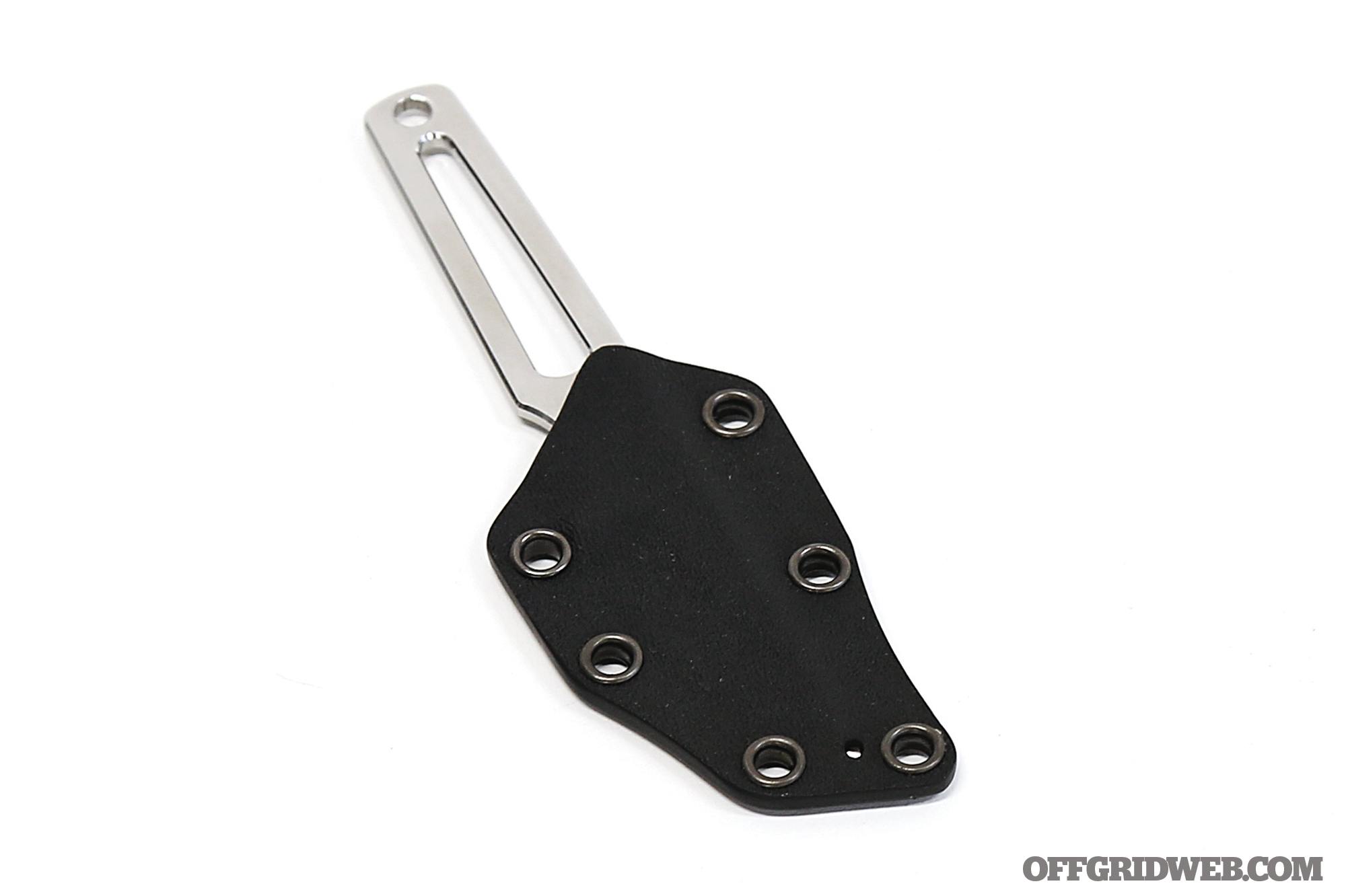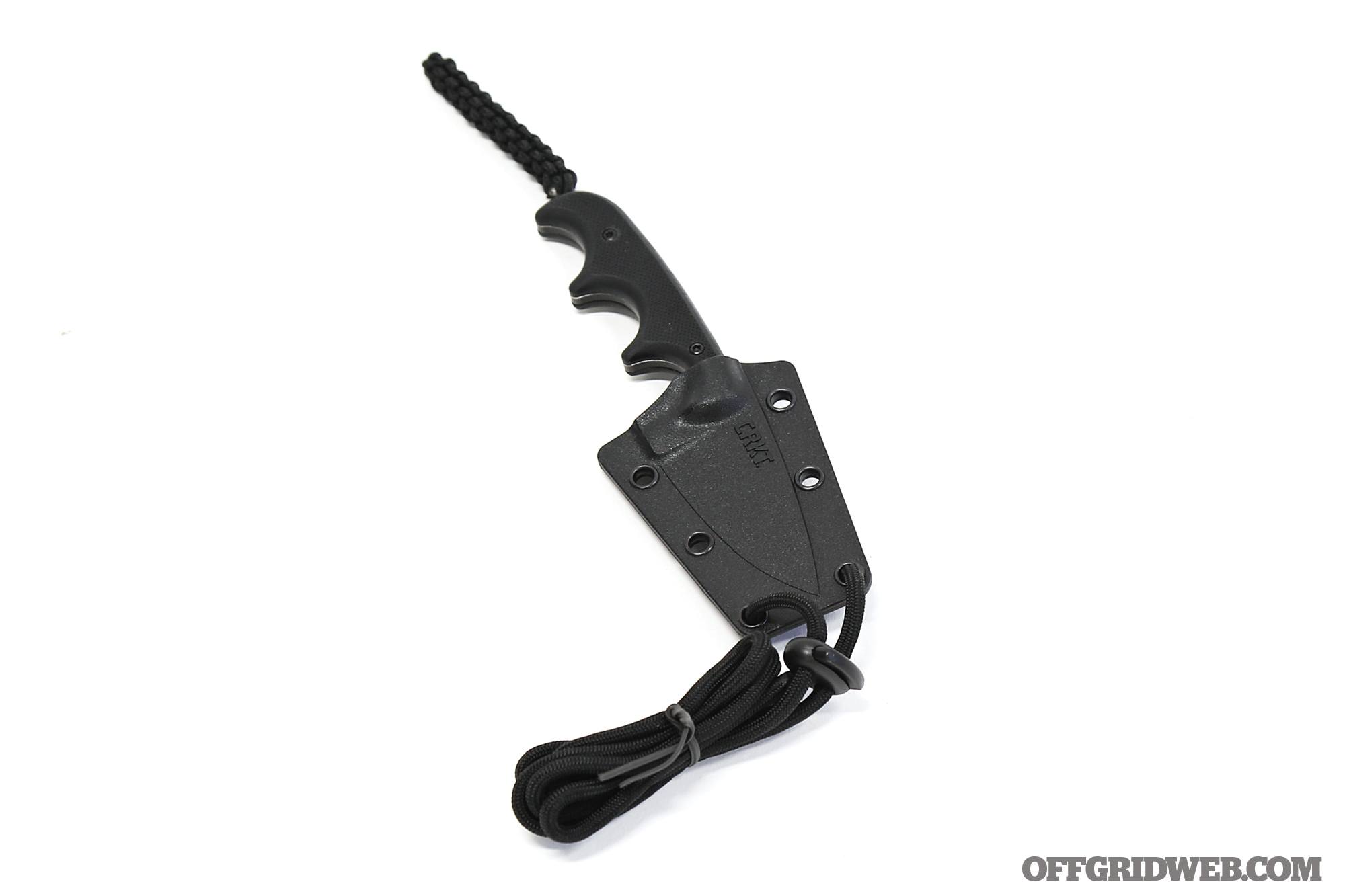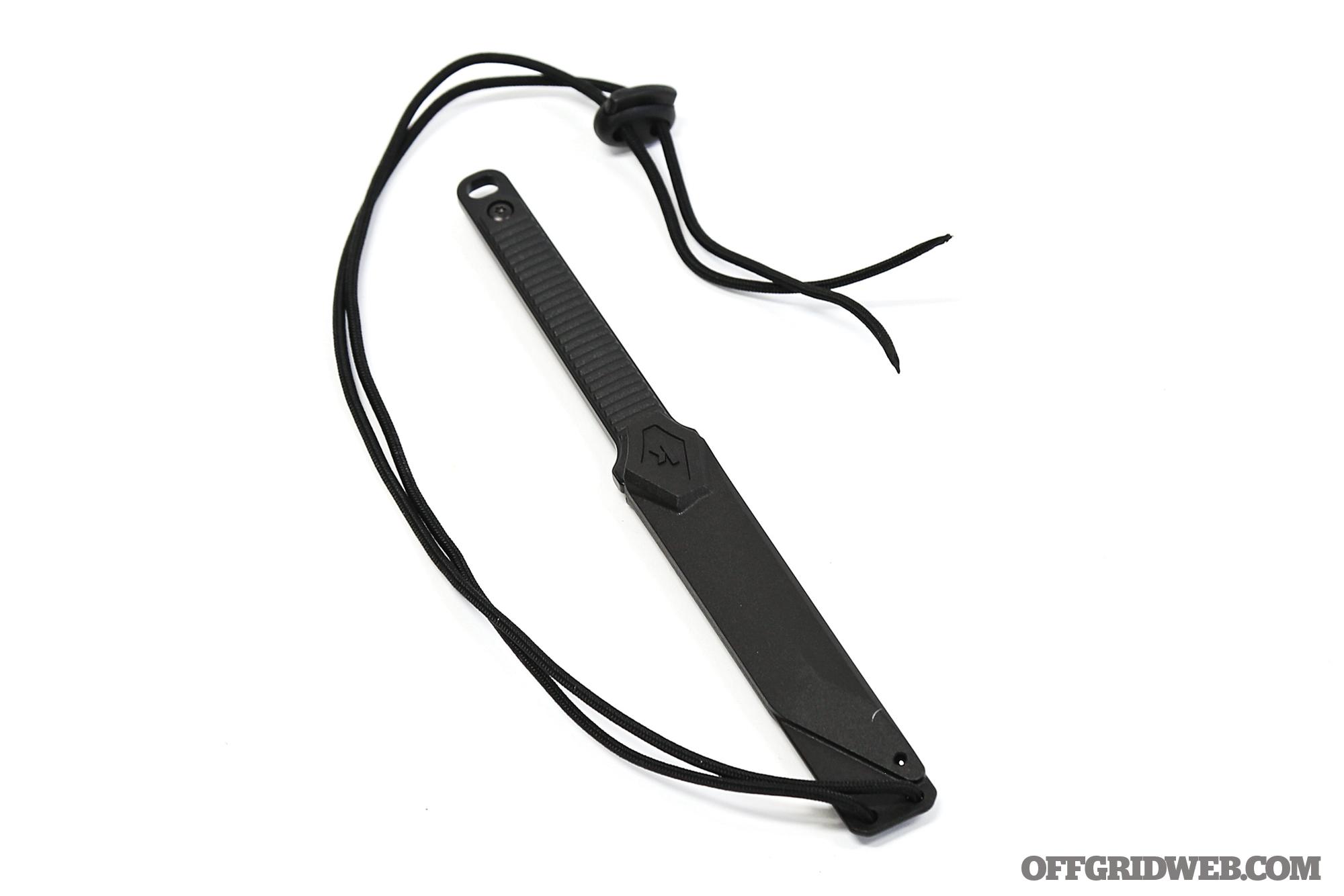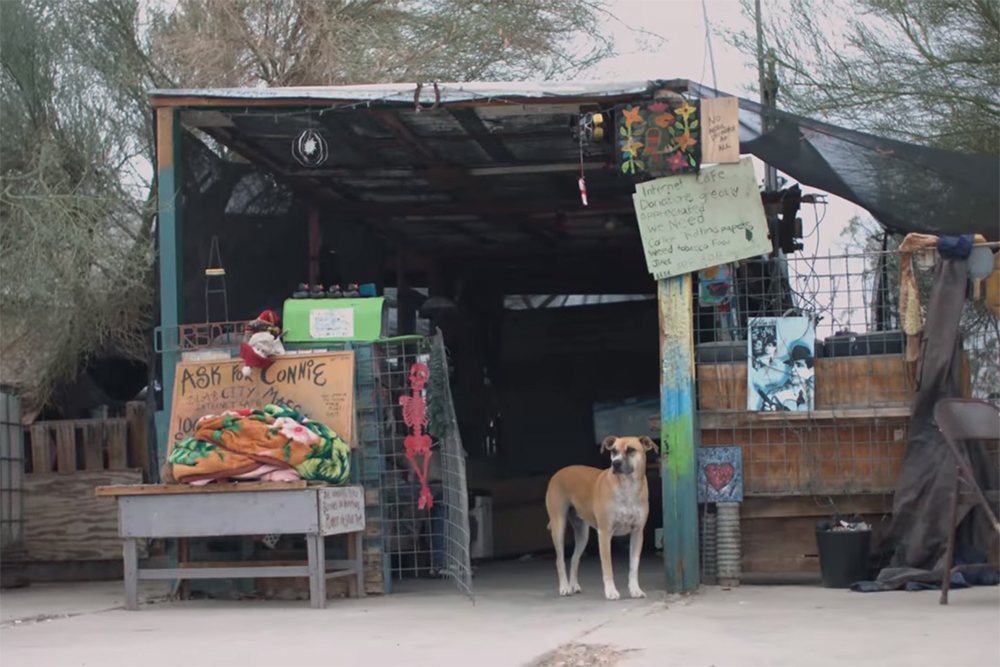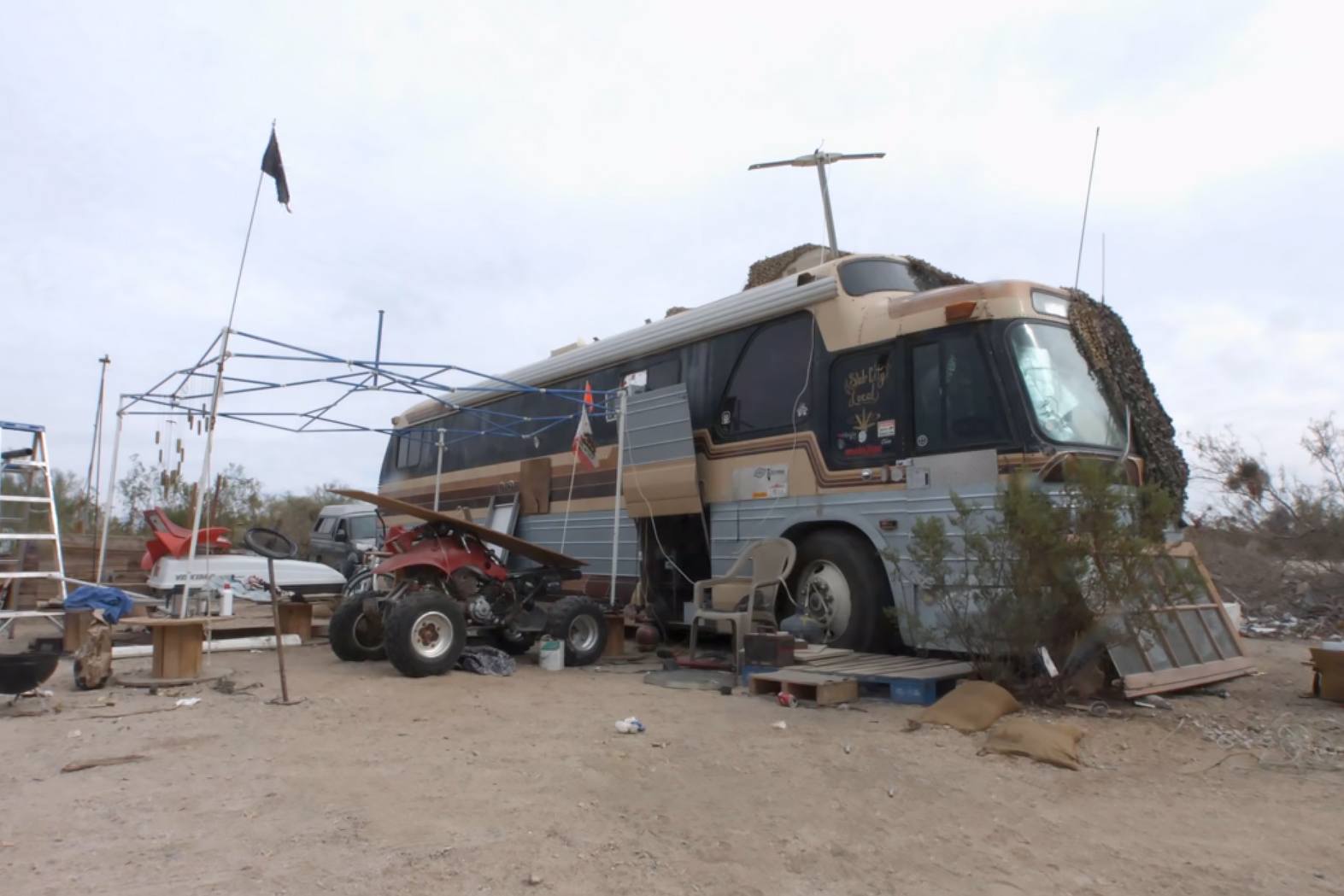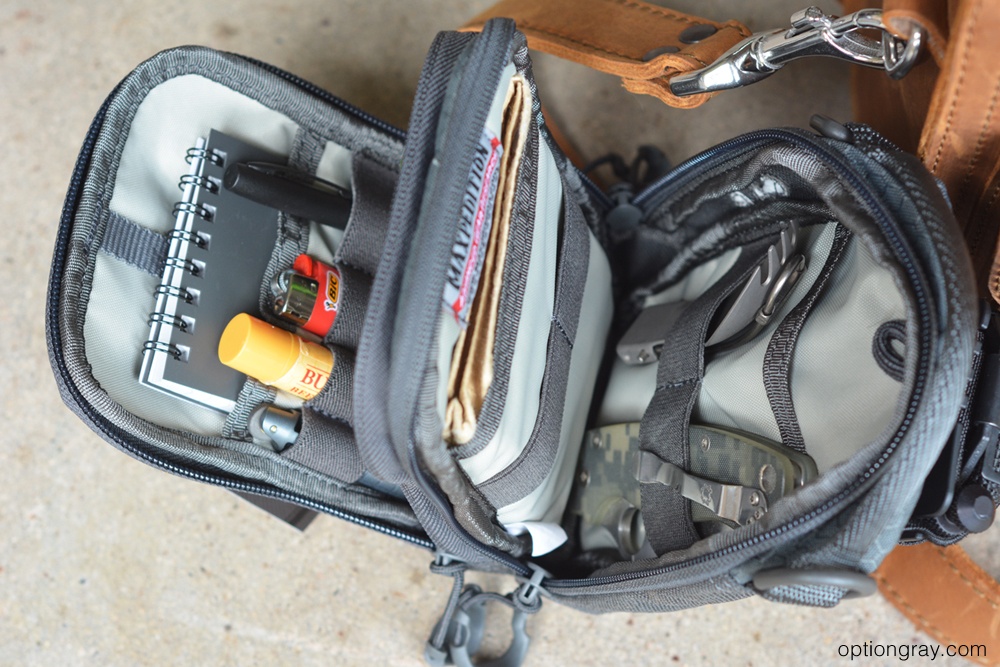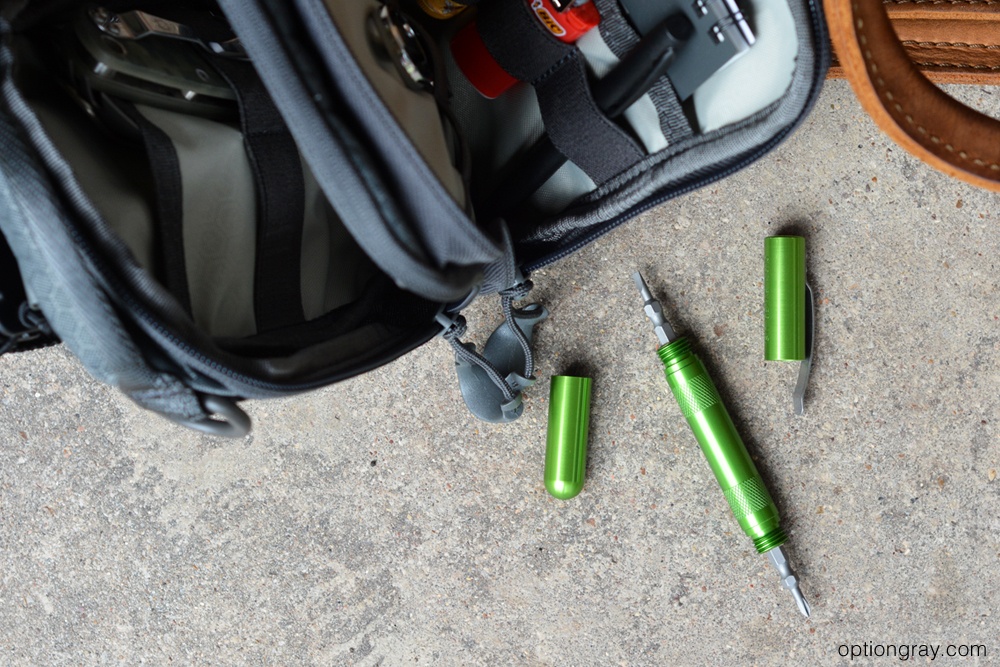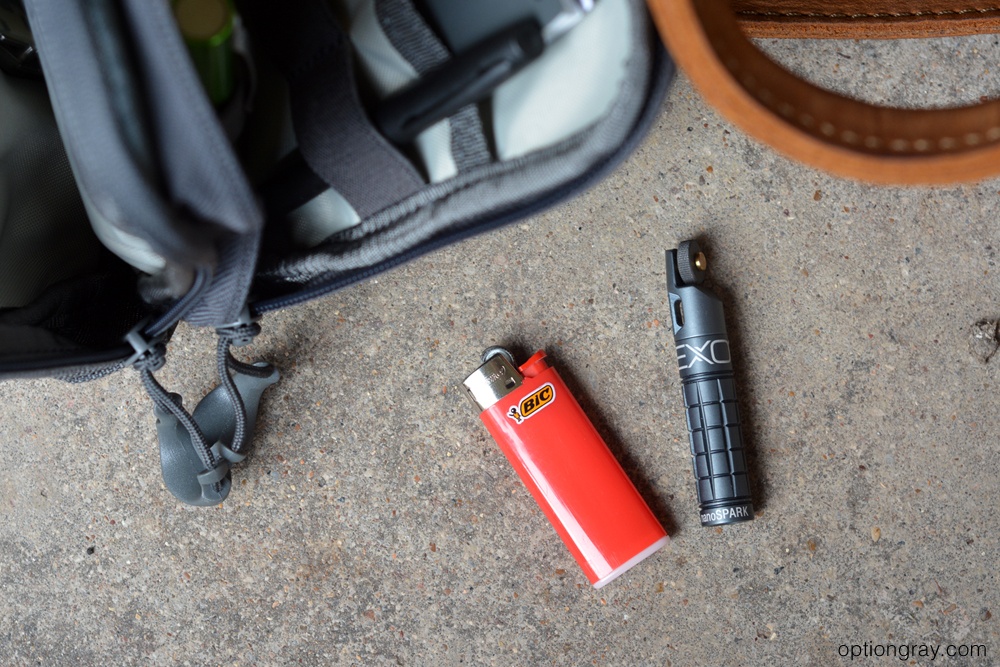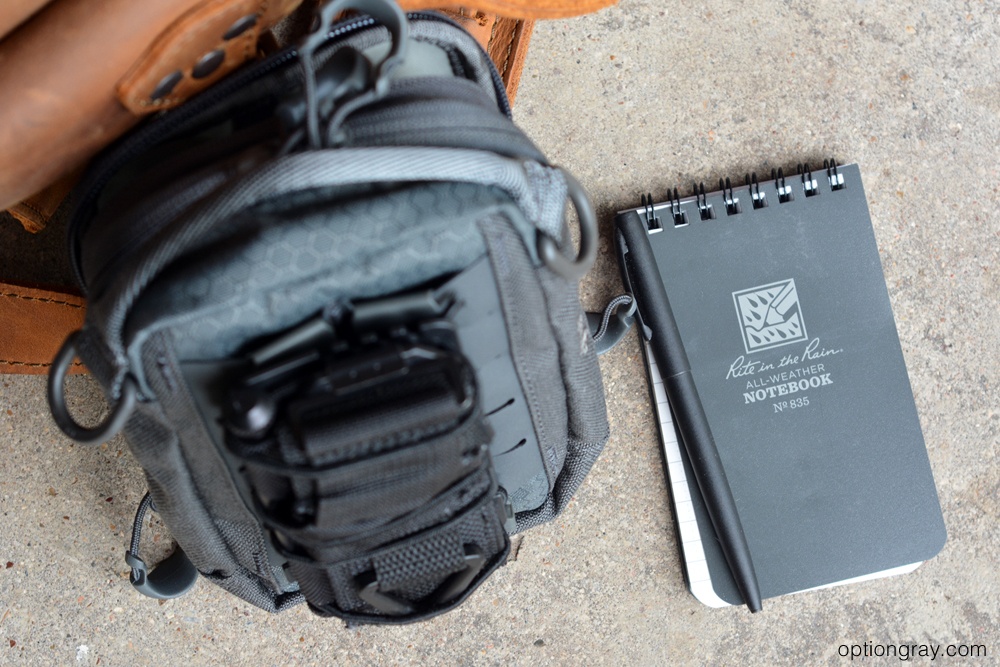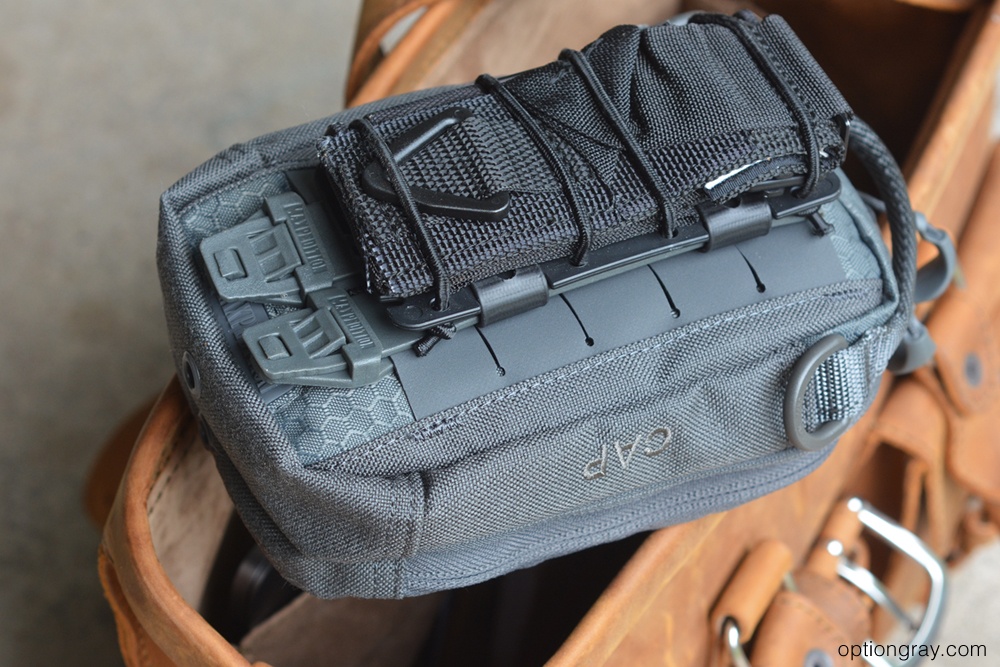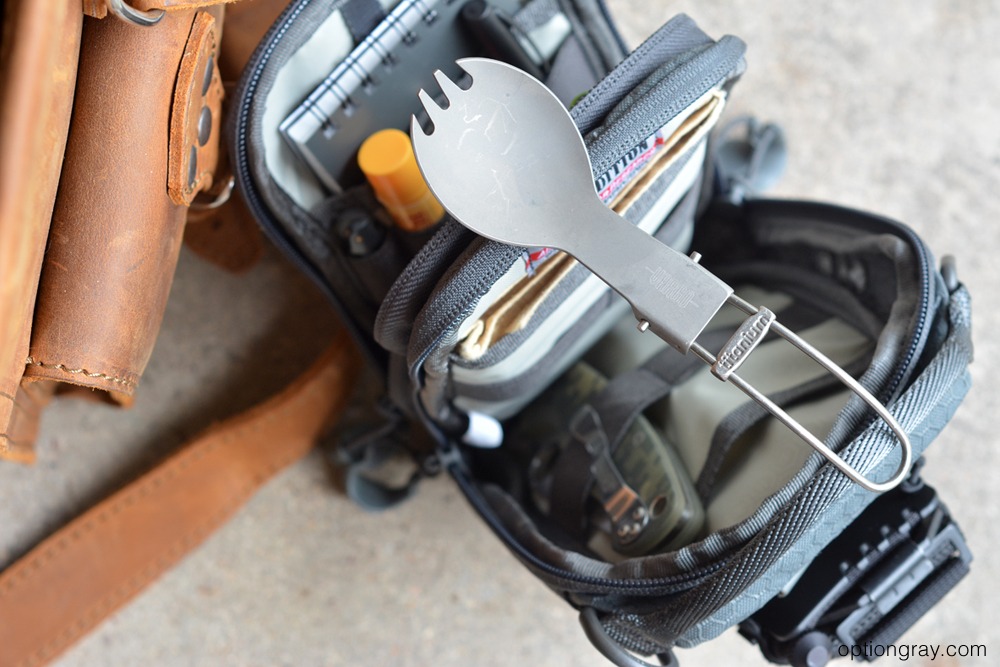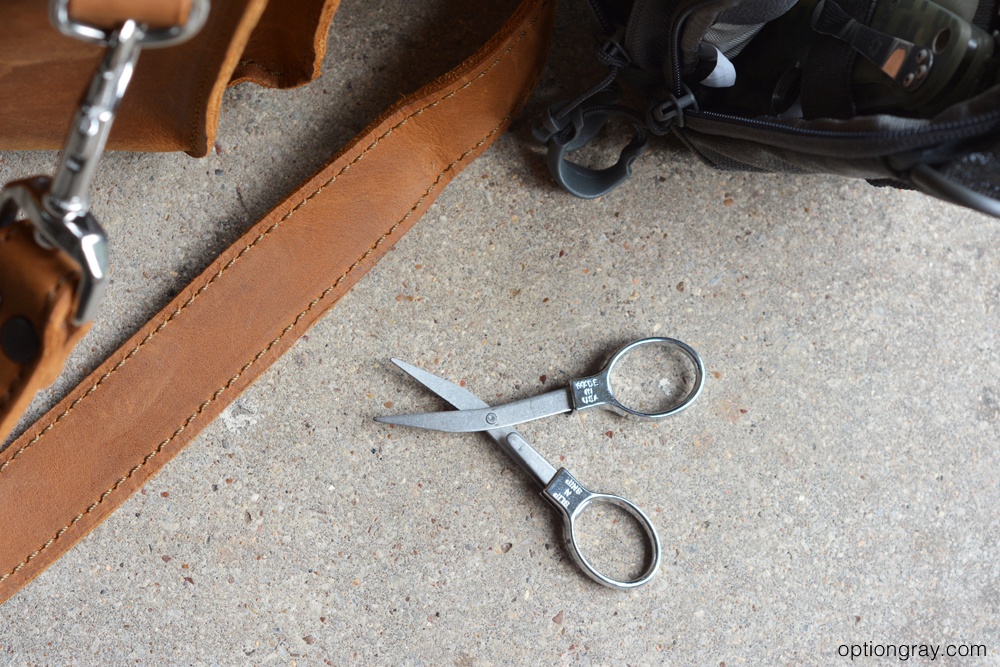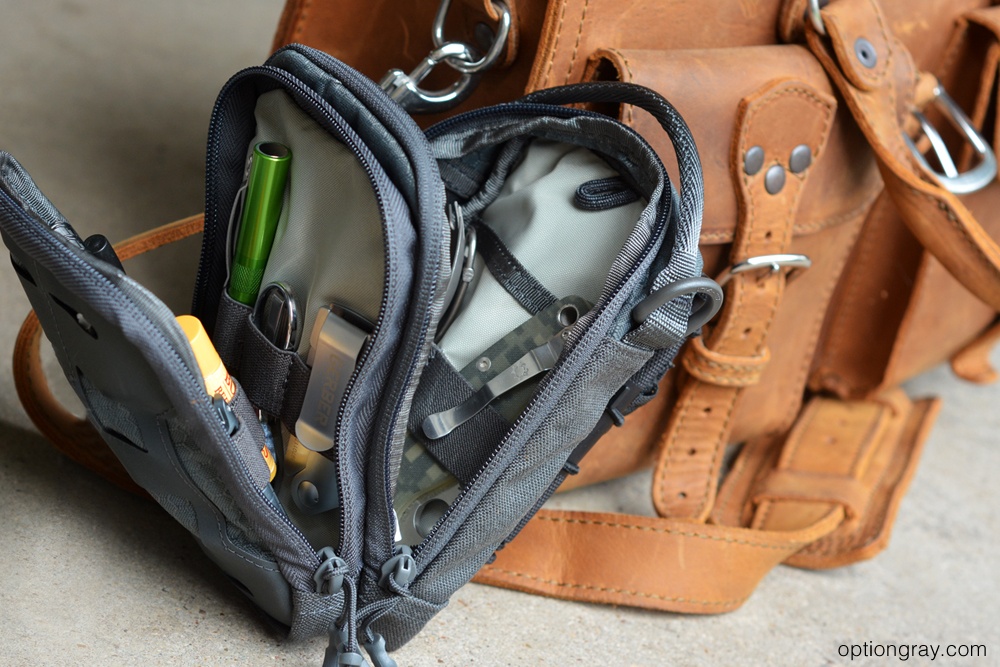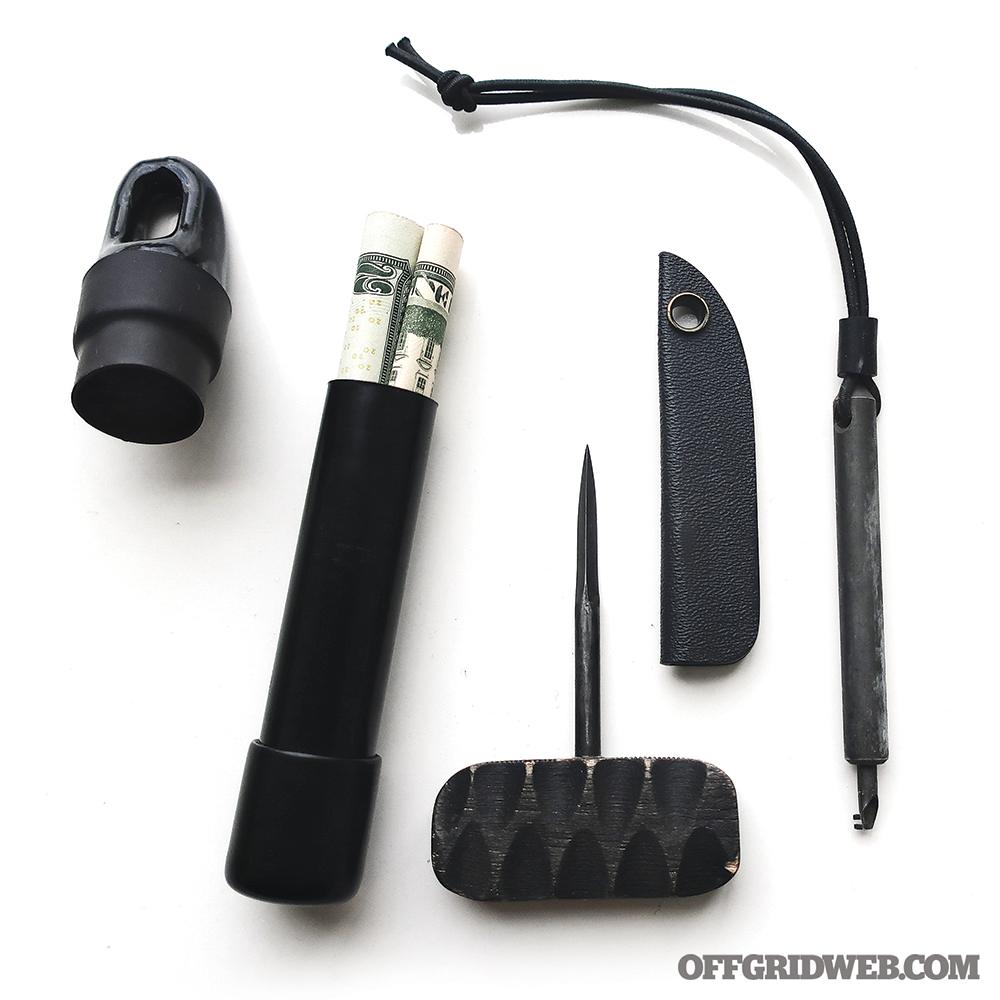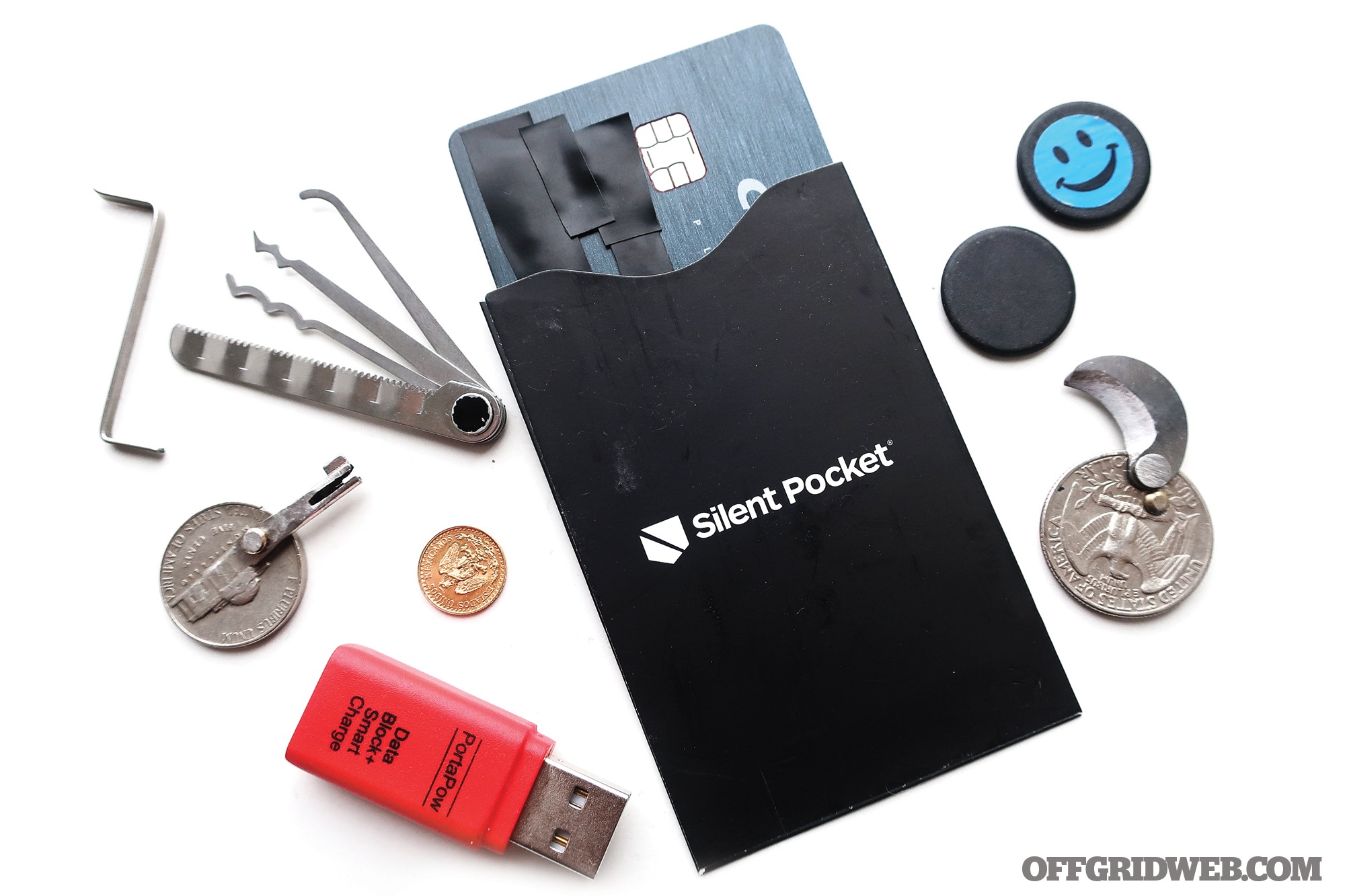It’s summertime, and for most of us that means increased outdoor activity. Whether it’s a baseball game, barbecue, range day, camping trip, or all of the above, you’ve probably got plenty of activities planned to take advantage of the warm and sunny weather. However, that weather can also be a double-edged sword if you’re not dressed accordingly. Moisture-wicking fabrics and ventilated gussets can go a long way to prevent sweaty discomfort, but sometimes letting your skin breathe fully is the best way to stay cool.
Here in Arizona, where the temperatures frequently exceed 110°F (43°C) from June through September, shorts offer a substantial breathability advantage over long pants. They also provide increased comfort and mobility in many cases, and if you’re near the water, they won’t get soaked if you have to wade in. Obviously there are also some trade-offs — you’ll need to be cautious about protecting your skin from the sun, scratches and scrapes, and insect pests — but the decision really comes down to personal preference. And when the mercury rises well into the triple-digits, we tend to favor wearing shorts.
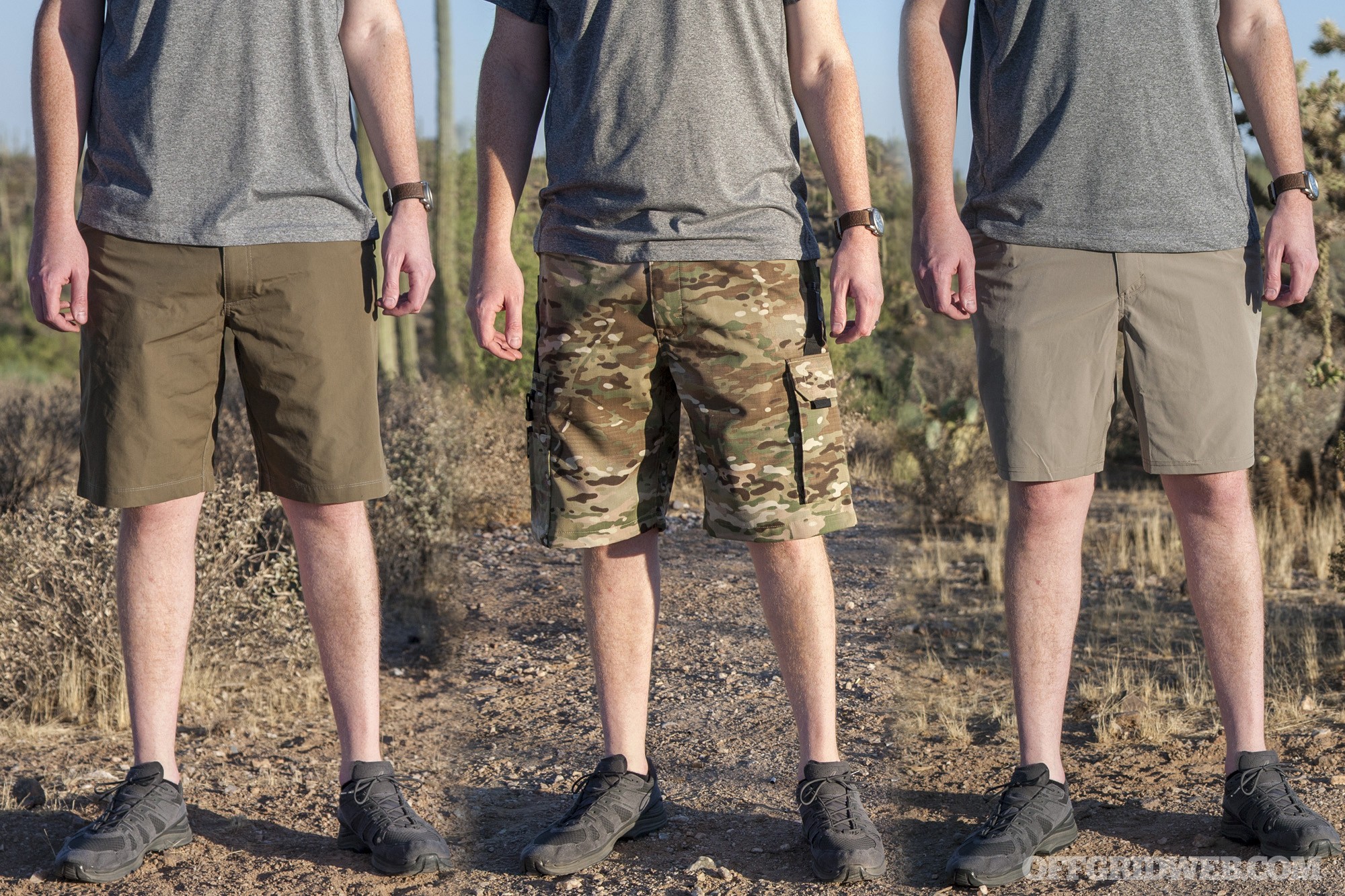
Left to right: Vertx Hyde LT (Alligator), Kitanica Range Shorts (MultiCam), 5.11 Tactical Ion (Stone)
In an effort to expand our wardrobe choices and replace some old pairs, we contacted three major outdoor apparel manufacturers to request some samples of their latest shorts. Today, we’ll share some of our feedback on each, including what we liked and what we didn’t. Read on for our reviews of the latest styles from 5.11 Tactical, Kitanica, and Vertx.
5.11 Tactical Ion Shorts
Colors: Black, Lunar, Stone (pictured), Mystic Heather
Sizes: 28 – 44
Inseam: 9 inches
MSRP: $40
URL: 511Tactical.com
These shorts feature an athletic 9-inch inseam that rides above the knee, and they’re made from an ultra-lightweight 88% polyester and 12% Elastane fabric blend. The material is thin, stretchy, and breathable, so it’s ideal for high activity in hotter climates.
This design offers eight pockets — two regular front pockets with two smaller pockets on top, two back pockets with hook-and-loop closures, and two hidden back yoke pockets at the 4:00 and 8:00 positions. These shorts can easily carry four AR mags without occupying the main front and back pockets — a handy feature for range days. Even if you’re not using the yoke pockets for that purpose, they’re ideal for inconspicuously stashing EDC items.
5.11 Tactical built a covert flex cuff pocket inside the front of the waistband. You can also stash a long strand of Kevlar cord, paracord, or Fire Cord here as part of a SERE kit. The primary pockets are deep and offer reinforced hems for attaching knives and other EDC gear. However, like the Vertx shorts, their high-cut wraparound design can cause larger items to print or fit uncomfortably at the edges of those pockets.
Pros:
- By far the most breathable and flexible design of the shorts we tested — like a hybrid between gym shorts and tactical pants.
- Yoke pockets were a great idea on the Defender Flex Jeans, and they’re still a great idea now. They’re perfect for AR mags, maps, knives, or other slim items.
- Affordable price
Cons:
- Back pockets are wider than they are deep, letting items slide from one side to the other. The small hook-and-loop closures also seems inadequate for the large pocket size.
- Lightweight material won’t last as long in hard-use settings as other types of fabric.
Kitanica Range Shorts
Colors: Black, Khaki, Ranger Green, or Wolf Grey; MultiCam original (pictured), Black, Arid, or Tropic; A-TACS iX; Kryptek Raid; Tiger Stripe
Sizes: 30 – 46
Inseam: 11 inches* (see notes)
MSRP: $159 ($149 for solid colors)
URL: Kitanica.net
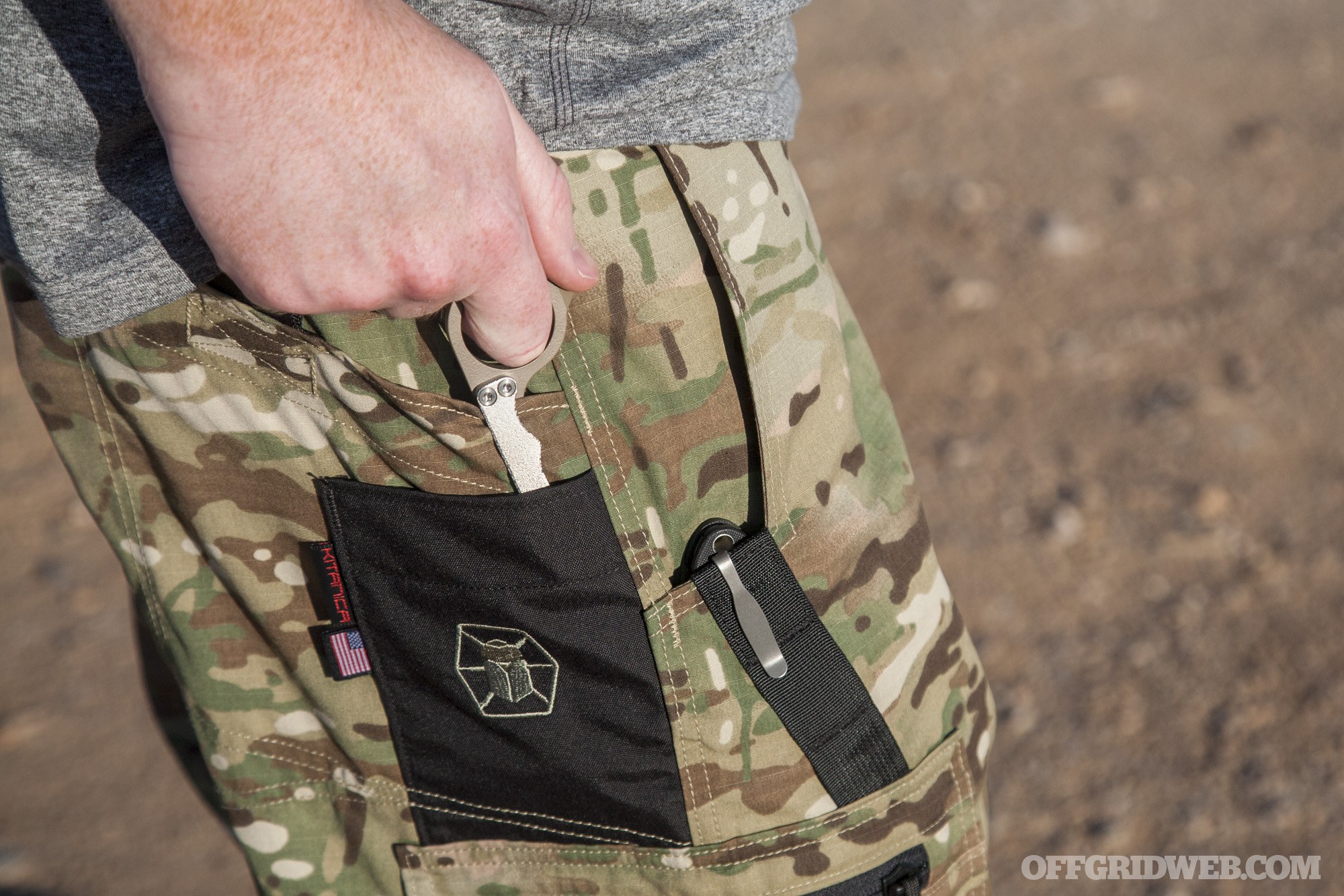
There are many quick-access pockets for EDC items such as this Scorpion Six Knives Pingvin impact tool.
Comparing these to the other shorts in this article — or just about any other options on the market — feels sort of like comparing a Desert Eagle to a Glock 19. They’re two very different approaches to a similar segment, and are likely to have two very different buyers as well. That said, we can’t help but enjoy the sheer excess and in-your-face design employed here. It’s sort of Kitanica’s signature, after all.
As an adaptation of the original Range Pants, the Range Shorts share many similarities. As always, they’re made in small batches in America using domestically-produced materials. They’re constructed from sturdy 50/50 nylon-cotton ripstop fabric with an incredible amount of stitching and bar tacks for reinforcement. Thick black nylon webbing forms the belt loops, pull tabs, and reinforcement for the front pocket hems (as if they needed more reinforcement).
It’s worth noting that these shorts feature an 11-inch inseam, but a higher waist than the other pairs. They’ll feel longer if you wear them where you’re used to wearing other shorts.
The front pockets and back pockets are pretty typical, with the latter featuring hefty hook-and-loop closures with nylon pull tabs. A pair of contrasting black side pockets are asymmetrical — the right one (with the Kitanica bug logo) fits an AR mag, and the left is slightly smaller to fit a pistol mag or tourniquet. The right-side cargo pocket is zippered, with three pen holders on its exterior. The left-side cargo pocket is a full-blown admin pouch, with sub-pockets, elastic bands, and a retention loop for a carabiner or other items. Cinch straps on the waistband allow fit to be tightened, so you’ll want to get one size up if you’re in between sizes.
Pros:
- Made in the USA and just as durable as previous Kitanica gear we’ve tested. If you’re picking one pair of shorts for the end of the world as we know it, these are a strong contender.
- Cinch straps allow precise fit adjustment without relying on a belt.
- Tons of color and pattern options, including limited runs such as old-school Tiger Stripe camo.
Cons:
- Love them or hate them, they’re anything but subtle. Even in the most discreet colors, these are bound to be an immediate attention-getter in public.
- Thick material has its benefits as mentioned above, but isn’t the most breathable or flexible.
- High price comes with the territory of complex design, overbuilt materials, and American manufacturing.
Vertx Hyde LT Shorts
Colors: Griffin, Desert Tan, Alligator (pictured)
Sizes: 30 – 44
Inseam: 11 inches
MSRP: $66
URL: Vertx.com
The Hyde LT shorts from Vertx offers a gray-man-appropriate design, with a sleek profile and several concealed features. They’re made from stretch fabric with VaporCore — a material by 37.5 Technology that’s composed of “active particles made from volcanic sand that have billions of micropores.” The manufacturer’s explanation for how this material works sounds rather outlandish, but based on real-world use, we can confirm that it does a good job of keeping your skin cool and dry.
Although they may not look like it, the Hyde LT shorts offer a whopping nine exterior pockets — two front pockets plus a enlarged coin pocket, two yoke pockets at 4:00 and 8:00, two back pockets, and two lower-leg pockets. That last pair is asymmetrical, with the right being a larger, angle-cut dump pocket and the left being a slim rectangular utility pocket. The right front pocket also offers a retention loop at the bottom for tying down a concealed pocket holster or knife sheath.
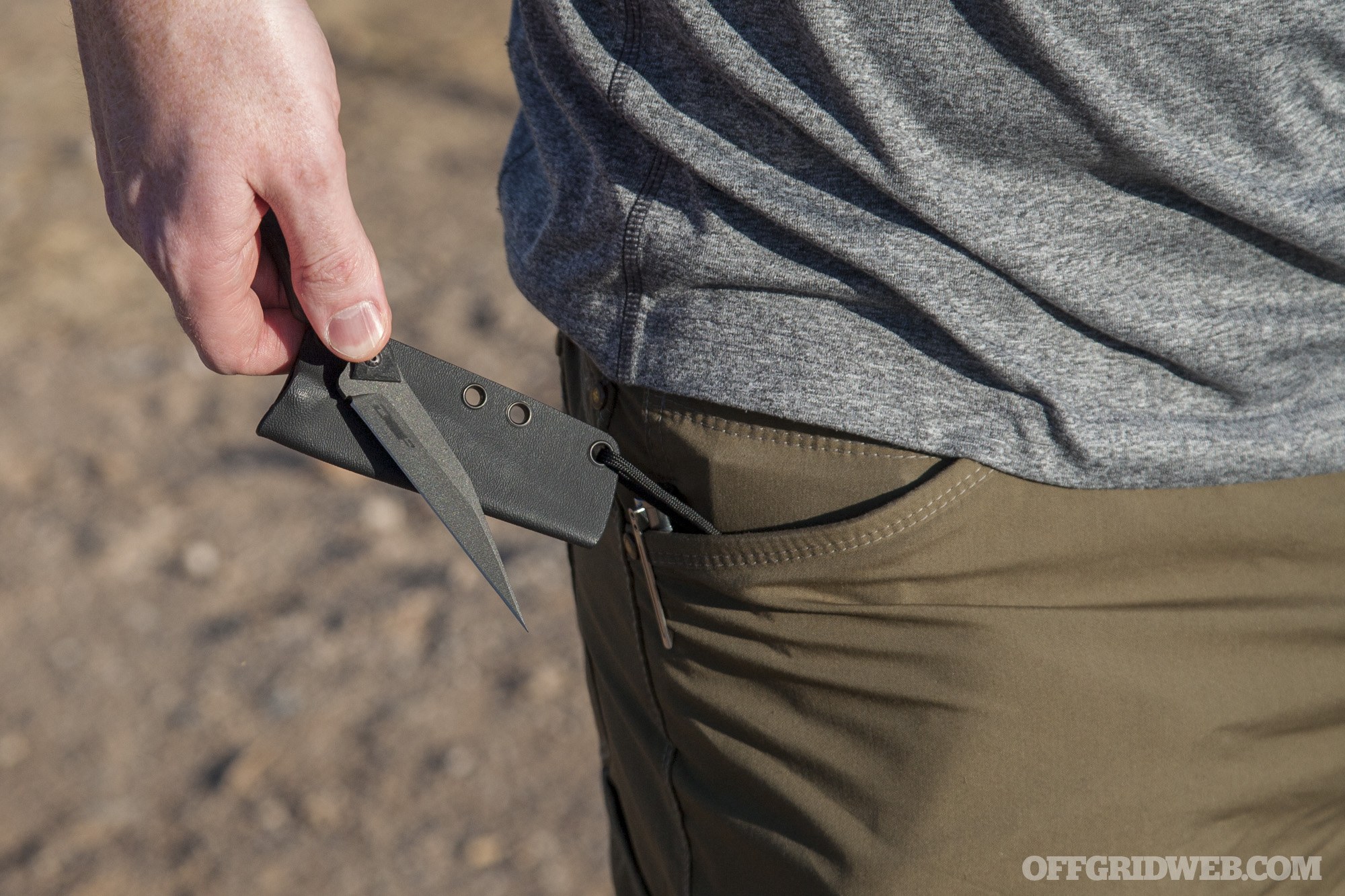
A retention loop allows for concealed carry of a fixed blade. (Pictured: Thick Bastard by Greg Moffatt / Direction of...
There are a total of three miniature hidden pockets inside the shorts — one at the rear of the waistband, one at the front, and one inside the fly. These can contain E&E items like cuff keys, shims, or lockpicks, and at least one of them will be accessible if your hands are cuffed in front or behind your back. There’s also a hidden comms wire passthrough in the right-side coin pocket, allowing the wearer to route a headphone or mic wire underneath a shirt and directly to a small radio or cell phone.
Pros:
- Discreet design is far more capable than it looks to a casual observer.
- Pockets offer lots of versatility, with various sizes and degrees of concealment.
- Holster/sheath tie-down loop is a simple feature that goes a long way, and one we wish more pants offered.
Cons:
- Vertx describes this as a “relaxed fit with contour waistband” — in other words, a tighter fit near the waist and looser fit around the leg. We’d prefer a more tapered leg.
- Front pocket design and placement causes larger clipped-on EDC items like flashlights to press against the hip and print through the fabric.

